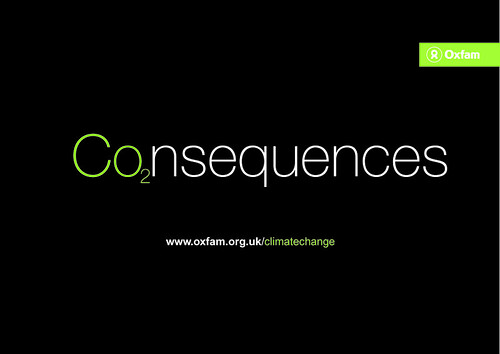
We are already witnessing the beginnings of a barrage of saturated media coverage about climate change and the upcoming Copenhagen conference. By the time the COP15 Conference at Copenhagen arrives it might be the only item in the news all over the world and that is good. We need to take some meaningful measures that could get us to move in the right direction. Who knows, we might even avoid the apocalypse.
The failure to reach an agreement to adopt an effective and clear plan of action to reduce greenhouse gas emissions would be a major setback to the environmental efforts to avert a catastrophic climate change, an increase in temperature greater than 2 degrees Celsius. Sea level will rise, major ocean currents would be disrupted, monsoons and hurricanes will increase both in their frequency and intensity, crop failures will become more common, desertification will increase; life as we know it will become disrupted. What is at stake is surely the greatest challenge that civilization has ever faced and a successful Copenhagen meeting is a must.
Yet if we are to act as dispassionate observers of this process we will have no choice but to note the major logical fallacy upon which Copenhagen is built. The issue is not whether the world can afford not to decrease its GHG emissions; it can not. The real issue though is whether Copenhagen can deliver us out of this self inflicted quagmire? How can it possibly do that when we even refuse to look into the root cause of this problem? Anthropogenic emissions are simply the product of human economic activity and no one is proposing that we limit economic growth. The position at Copenhagen is nothing else but an exercise in a combination of major logical fallacies such as “argumentum ad populum” combined with “argumentum ad baculum”; a false argument based on the appeal to the majority and to fear.
Let me explain. One of the major efforts that the nations, represented at Copenhagen, will confront is that of reducing car emissions. It is widely believed that the move to hybrid engines and electric plug-in vehicles, in addition to more efficient engines, will turn out to be a major contribution in achieving the sought reduction in carbon emissions. But would it? The world produced over 70 million new vehicles during 2007 but under the best estimates all the hybrids and electric plug-in will not amount to more than 2 million units a year by 2015. If these numbers hold then that is a miserly 2% of the new cars, not to mention that China and India alone are slated to replace the United States as the number one producers of vehicles in the world. Emissions from China and India, both of whom are neighbours of Bangladesh, will not be regulated. Climate change is the largest infringement on the sovereignty of Bangladesh and yet it goes on each day of the year without firing a bullet or creating a political standoff. Even if we are to assume, as unlikely as it might be, that by 2020 one fifth of the newly manufactured in the world each year would be powered by either a hybrid or an electric engine, what about all the raw materials that has to be mined and processed in order to build all of these cars not to mention all the tires, spare parts, accidents and highways that they will generate and require? Would supplying all of these resources by “developing” countries be without a carbon footprint?
A more efficient car is a welcome development but a more efficient car will be useless in reducing the human impact on the ecosystem unless we are to simultaneously build fewer cars and consequently fewer garages, less highways, less spare parts use less resources and conserve our natural capital.
It is not sufficient to set up a goal. We must set up a goal accompanied by a workable plan otherwise the goal would best be classified as a wish. Imagine ,if you will, that all the water bottling facilities in Fiji ; whose products are shipped to North America and the rest of the world; are to become totally powered by energy acquired through either thermal solar , photovoltaic or wind turbines, would that then make the consumption of such water environmentally friendly? You decide.
As you can see from the above the need to cut down on GHG’s and carbon emissions is not questioned. What is at stake is our ability, or rather inability, to accept that climate change is nothing more than a manifestation of a systemic failure and such failures demand a total redesign of the system. If we cannot understand this most basic of all facts then all our efforts, as well intentioned as they might be will be for naught.
A podcast of the above can be heard at: ramblings11.mypodcast.com


